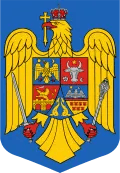
Official Name: Romania
Location: (Southeastern) Central Europe
Time Zone: Seven hours ahead of U.S. Eastern Standard Time (GMT + 2)
Area: 92,043 sq. miles (238,391 sq. km) – a little larger than the state of Minnesota
Flag of Romania: Three vertical stripes: red, yellow and blue.
Population: 19,942,000 (March 2014)
Little known or interesting facts about Romania and Romanians can be found in our Did You Know / Interesting Facts section.
Largest cities: Bucharest (1,883,400), Cluj Napoca (324,600), Timisoara (319,300), Iasi (290,400), Constanta (283,900), Craiova (269,500), Brasov (253,200), Galati (249,400), Ploiesti (2209,900), Oradea (196,400).
Romania’s population lives in 320 cities and towns and 12,956 villages.
Main Ethnic Groups: Romanian 84%, Hungarian 6.1%, Gipsy 3.1%,
German 0.2%, Ukrainian 0.2%
Religions: Christian Orthodox 81%, Roman Catholic 4.3%, Reformed 3%,
Greek-Catholic 0.7%, Unitarian 0.3%, Jewish, other.
Official Language: Romanian
Currency: Leu (RON) ( plural Lei )
Climate: Temperate, four distinct seasons, similar to northeastern USA
Capital: Bucharest (București)
Form of State: Romania is a semi-parliamentary democracy based on a
bicameral Parliament: the Chamber of Representatives (Camera Deputaţilor) and the Senate (Senat).
All members of the legislature are directly elected from Romania’s 41 counties.)
Legal system: Based on European models and Constitution of 1991.
Electoral System: Universal direct suffrage over the age of 18.
Parties must win at least five percent of the national vote to gain
representation in the Parliament.
Head of State: President of the Republic, currently Mr. Klaus Iohannis
(elected on Nov. 16th, 2014).
Romania’s president is allowed to serve two consecutive five-year terms.
National Government: The government is led by the Prime Minister,
confirmed by the Parliament on the nomination of the President of Romania.
Regional Government: Forty-one County Councils (Consiliu Judeţean).
Romania is a member state of the
European Union and North Atlantic Treaty Organization (NATO)






